Karl Wolff
Версия о работе Рана после своей "смерти" в 1939 году послом в Италии несостоятельна
Одна из версий о жизни Отто Рана после его смерти в 1939 заключается в том, что некий Rahn был послом Германии в Италии в последние годы Третьего Рейха. Действительно, такой человек был, но это, похоже, не наш Отто.
Фото из архивов того времени, найденнoе в депозитарии Assotiated Press<.
На нем слева направо: Отто Ран, посол Германии в Италии, фельдмаршал Эрвин Роммель, и Бенито Муссолини. Снимок сделан 22 января 1944 года в штаб-квартире итальянского правительства.
Хоть лицо Рана почти не видно, можно с уверенностью сказать, что это человек старше 50 лет, выше среднего роста, крупного телосложения, что совсем не соответсвует субтильной фигуре Отто Вильгельма Рана, которому на тот момент должно было бы быть 40 лет.
Н. Гудрик-Кларк Оккультные корни нацизма. Тайные арийские культы и их влияние на нацистскую идеологию.
Глава 14 КАРЛ МАРИЯ ВИЛИГУТ ЛИЧНЫЙ МАГ ГЕНРИХА ГИММЛЕРА
Арманисты, ариософисты и рунические оккультисты, с которыми мы встретились до сих пор, обладали в той иной степени стереотипным мировоззрением. В их доктринах шла речь о возвышенных и сверхчеловеческих предках, чей древний гностический закон нес арийцам мудрость, власть и благополучие, пока не был вытеснен чуждыми и враждебными культурами. Предполагалось, что эти предшественники скрывали свое венценосное знание в таинственных формах (рунах, мифах, традиций) и оно могло быть расшифровано только их духовными наследниками, которыми и являлись современные ариософы. Лист, Ланц фон Либенфельс, Горслебен и другие выдающиеся ученики гностической сокровищницы одушевляли собой жизнь секты, некоторые из их идей или символов могли проникнуть в более широкое социаль ное окружение. Таким образом, эти люди, конечно, влияли на общее мифотворческое настроение нацистской эры, но нельзя сказать, что они прямо определяли пос тупки тех, кто занимал ответственные посты и был наделен реальной политической властью и ответствен ностью.
Жизнь Тайного короля Германии
Фигура Вилигута бесконечно туманна. Никому не известный в начале XX века в Австрии, в 30-х он публиковал свои идеи лишь в мелких журналах, а уже в 1933 году вошёл в SS Гиммлера, где занимался написанием приватных докладов своему начальнику. Из-за скудных сведений сложно точно оценить его роль и степень влияния на оккультную культуру Германии начала XX столетия.
Ранний период
(1866-1919)
К тому времени, как роль Вилигута стала значимой в истории оккультизма центральной Европы, он уже достиг зрелых лет. Свою первую книгу, «Seyfrieds Runen» («Зайфридские руны») он опубликовал в возрасте 37 лет, в чине капитана австрийской армии.
RELIGION: The Cathars and Otto Rahn
Ed Jajko says:_I would be most interested if Christopher Jones could cite his authorities for the Cathar Christology he presents us. What little I have read suggests that the Cathars had different, not entirely coherent views on Jesus Christ, but that they were not quite in consonance with what Mr. Jones has stated. Reference to a couple of scholarly sources would be much appreciated.
RH: Yes, a few precise sources.
Ed Jajko asked Christopher Jones to give sources for his statements about the Cathars. Christopher replies:
The sources for my comments on the Cathari are all from Cruzada contra el Grial [original German, Kreuzzug gegen dem Gral] by Otto Rahn. This particular translation was done by Fernando Acha and published by Hiperión in Madrid. To the best of my knowledge and a fact that was reconfirmed to me by the current copyright holder in Germany, Rahn's book was never translated into English although Spanish, French and Italian versions exist. The book was first published in 1933.
The version of Rahn's service after death in 1939 as a ambassador to Italy is untenable
One of the versions of the life of Otto Rahn after his death in 1939 is that some Rahn was Germany's ambassador to Italy in the Third Reich recent years. Indeed, this man existed, but it does not seem to our Otto.
There is a photo from the archives found in the depository of the Assotiated Press<.
От the photo: The German Ambassador in Italy, Otto Rahn, left, talks with Germany's Field Marshal Erwin Rommel and Benito Mussolini during a reception in governmental quarters in Italy on Jan. 22, 1944.
Otto Rahn (Dutch)
Otto Rahn werd geboren in Michelstadt (Odenwald) op 18 februari 1904. Na zijn middelbare studies (en de eerste wereldoorlog) trekt hij naar de universiteit waar hij aanvankelijk rechten studeert. Maar al spoedig gaat zijn belangstelling uit naar de literatuur en laat hij zich inschrijven aan de faculteit der letteren in Heidelberg. Zijn droom is literair recensent te worden voor een krant of tijdschrift.
Als muziekliefhebber dweept hij met Wagner. Diens "Parsifal" brengt hem in contact met de graallegenden en hun Duitse auteur Wolfram von Eschenbach. Die studie zal hem nooit meer loslaten.
Otto Rahn Biography
CHRONOLOGY 1904-1939
18 Feb 1904 Otto Rahn born, Michelstadt. Parents Karl & Clara (nee Hamburger)
1910-1916 Junior school at Bigen
1916-21 Secondary school at GrieBen
1922 obtains Baccalaureat
1924 obtains Bachelor in Philology and History
1930 Rahn begins his European travels (Paris, Provence, Switzerland,
Catalonia, Italy)
1931 Rahn visits French Pyrenees. Visits "Spion" in Pyrenees with Himmler and Abetz
1932 Rahn leads a Polaires expedition in Pyrenees
13.12.33 Rahn joins the German Writers Association
1934 publishes "Kreuzzug gegen Gral" (Crusade against the Grail)
1935 appointed to personal staff of Heinrich Himmler
29.2.36 Rahn joins Allgemeine-SS, member 276 208
1936 Rahn visits Iceland with 20 men
1937 publishes "Luzifers Hofgesind. Eine Reise zu denguten Gelstern Europa" (Lucifer's Court in Europe; Rahn sent back to Languedoc (Montsegur), says he will return in 1939. Time of alleged Corbieres visit?
20.4.37 promoted to sub-lieutenant (Untersturmfuhrer)
Sep-Dec1937 military service for "disciplinary reasons" at Oberbayern Regiment, Dachau<
Otto Rahn – Otto Skorzeny Raiders of the Found Ark?
The founders of the Third Reich were esoterically involved with matters which unavoidably skirt the mysteries associated with the valley of Rennes-le-Chateau. Their interests were not however, confined to the ephemeral, there is evidence of the tenacity with which they pursued the material associations of the valley. Many assorted books on Rennes-le-Chateau mention that a battalion of German mining engineers made excavations in the area during World War Two.
Newspaper coverage of a speech by Otto Rahn
(Westfalia Landeszeitung, January 9, 1938)
Otto Rahn Reads in Dortmund Evening Lecture at the Dietrich Eckart Haus
Otto Rahn, the young poet and researcher read and lectured Friday evening at the Dietrich Eckart Verein (club) in front of a rather large and very captivated audience. After a few introductory words by the person in charge of cultural events for the Dietrich Eckart Verein, Kurt Eggers, who greeted Rahn as a comrade and briefly outlined the Lucifer-Problem which Rahn would talk about. Next Rahn created an image of Lucifer in such emphatic and compelling language that it could not be thought out in a more moving and explicit manner. Rahn read from his newest work, "Luzifers Hofgesind" (Lucifer's Court Servants), which tells about his travels and findings in Southern France where he followed the traces of the Grail and the Albigenses (Cathars), the pure and true heretics, and from new viewpoints, he drew a prolific picture of this anti-Roman movement which also spread in Germany at that time. The lecture covered difficult material and required extreme discipline and alertness. It was a good sign for the symbioses of lecturer and audience that no word was lost and that the image of Lucifer, which Rahn celebrated with the Albigenses as the Bringer of Light, was most effective.
Raiders of the Lost Grail
Berlin between the wars was a city known throughout Europe for its bohemian subculture of young intellectuals. Amongst the personalities who hotly debated the many modernist “isms” that were fracturing the old ideological certainties which had glued together the 19th century, few individuals were more colourful than a dark-haired, green-eyed young man named Otto Wilhelm Rahn. His gaunt figure, swathed in characteristic black coat and fedora, casts a long shadow out of those twilight years, a ‘great silhouette’ around which the most extravagant myths accrued. He was variously said to be a Mason, a Rosicrucian, a Luciferian, an agent of the Thule Gesellschaft, an initiated Cathar and even the leader of an obscure, international secret society. As author Philip Kerr puts it, Rahn’s contemporaries might not have been surprised to see “the Scarlet Woman and the Great Beast come flying out of the front door” of his apartment on Tiergartenstrasse. One of his Nazi peers in Heinrich Himmler’s Black Order remarked in an internal memo that he “half suspected Rahn of being in league with the little people”. To this day, it is widely believed that this enigmatic young man knew the whereabouts of one of the most sacred relics in all Christendom – the Most High Holy Grail. But the truth is stranger still…

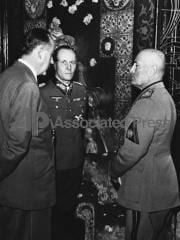

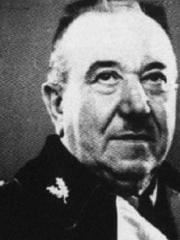
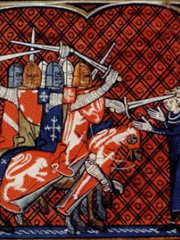
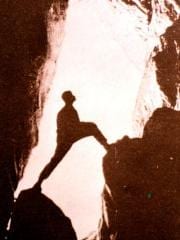

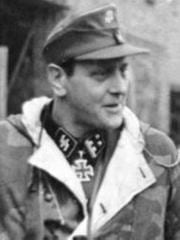
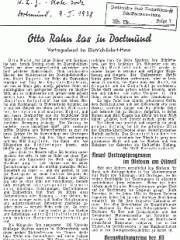

Commentaires récents
il y a 13 années 17 semaines
il y a 13 années 17 semaines
il y a 13 années 17 semaines
il y a 13 années 17 semaines
il y a 13 années 21 semaines
il y a 13 années 26 semaines